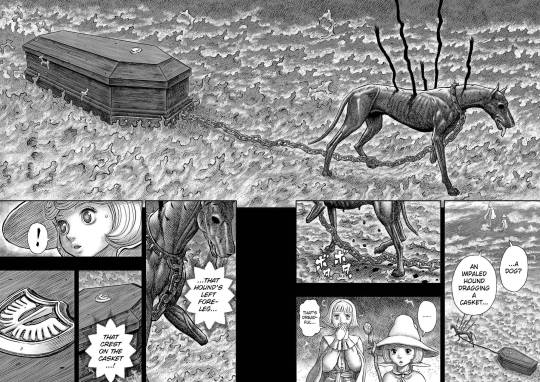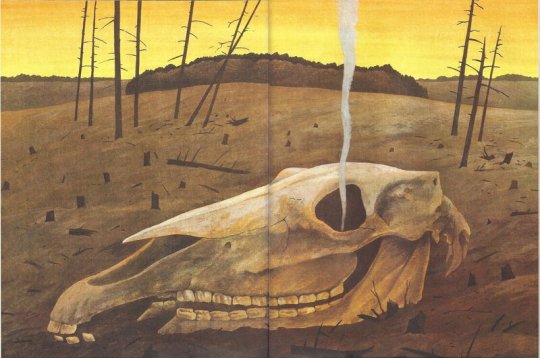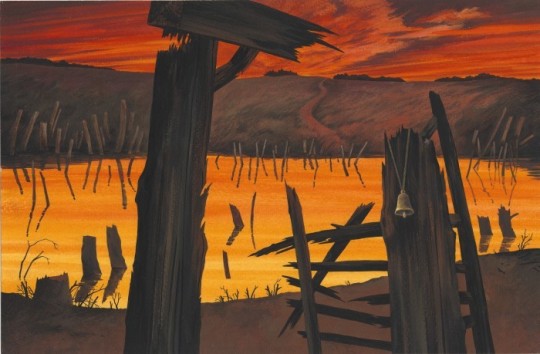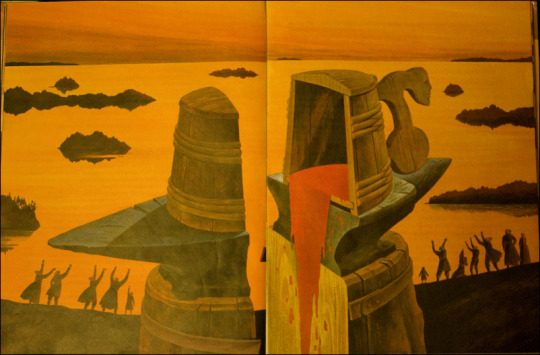#jaan tammsaar
Explore tagged Tumblr posts
Text





Fairy tales by Estonian illustrator, Jaan Tammsaar (1946).
667 notes
·
View notes
Text
Online
Class this week was the first online class for Comm Design Studies with Ben (class tutor) and my first online class ever. I’m glad the class was organised and wasn’t as chaotic as I expected. We went through elements & principles, something we all most likely did in vce, however it was the question Ben made after presenting each design that created interesting conversation, “Is this design good, or bad?” This led me to think after class about what design I like, currently I’m more attracted to design that is colourful, detailed, noisy and sometimes obtrusive. But what I like is constantly evolving which is also what this blog documents, which brings me to next part of our online class.


http://50watts.com/Kits-Sarapikus
We looked at 50watts.com a blog dedicated to archiving interesting and historical illustration and design. We were told to look through 50watts and find something to share to the online class chat and talk a bit about why we like it. I never got a turn (my mic doesn’t work anyway so it’s not like I would’ve had a chance), however I found these illustrations by Jaan Tammsaar from Estonia, published in 1984. It’s exactly what I love, the bold line work and how it’s used to create form, the interesting vibrant colour palette, and the overall composition of each illustration is incredibly captivating and well balanced against the type. Most of his work isn’t like the illustrations featured here, because these illustrations are inspired from Russian Lubok, a style used in mid the 17th century and remained to be relevant for centuries as new technologies in printing, such as lithography, were being discovered.
Here are some links about Lubok if you’re interested:
https://russia.rin.ru/guides_e/7309.html
http://russia-ic.com/culture_art/visual_arts/491/#.XoAKQW5xWqA
https://publicdomainreview.org/collection/d-a-rovinskiis-collection-of-russian-lubki-18th%E2%80%9319th-century
Lubok has been around for a long time so there’s a lot of rich history about its importance during times such as the Napoleonic era and Russo-Japanese War. Here are some pieces of Lubok I find interesting that share similarities to Tammsaars’ work.
Reference:
1. "Gromadnyi kot." [Big Cat], 1881 Anonymous (A lot of these works don’t have the source on the artists, due to a lack of preserving the artists name throughout history)
2. An Animal Found in Spain Anonymous, January 27th 1775
3. The Book of Divination Anonymous, 1881



2 notes
·
View notes
Text
something i would love to add regarding berserk tho, is that i’m absolutely in love with some of its imagery
(spoilers? you know the drill)
one of my favourite scenes both conceptually and visually was Casca’s dream (chapter 348):

i was stuck zooming in on this page for a while. i still can’t get enough of how its mood is cultivated! this beautiful point in which horror bleeds into despair and makes a point to stand there. in some ways this page hit me harder than the scenes of the eclipse
but as i was looking at it i remembered once more a book i had in my childhood. it was a retelling of our national epic, Kalevipoeg (Son of Kalev), illustrated by Jaan Tammsaar:


these illustrations used to scare me, but in a very sad way. a feeling i can now identify as that very despair. curiously, i feel like it’s in the proportions even more than the colours. something about that unreachable height, unbearable weight... constant sense of futility.


the punchline here is that it was a children's book. it was a retelling of Kalevipoeg for children. with pictures.
i’ve no idea what possessed them to believe this despair and hopelessness was ‘it’, but... well, i kept coming back. anyone’s guess whether this impacted me somehow, or if this longing for suffering is intrinsic. my favourite game is bloodborne, etc etc etc
#berserk#i reread the synopsis of kalevipoeg just now and jfc. quoting#...the sword cursed by the Blacksmith attacks and cuts off his legs. Kalevipoeg dies and goes to heaven. Taara reanimates Kalevipoeg#places his legless body on a white steed and sends him down to the gates of hell where he is ordered to strike the rock with his fist#thus entrapping it in the rock. So Kalevipoeg remains to guard the gates of hell#hello? berserk has nothing on this#my big tragedy is that the book was lost when we moved. i really really want to find a copy but so far no luck : (
60 notes
·
View notes
Photo

Illustration by the Estonian artist Jaan Tammsaar for Kits Sarapikus, a Belarusian tale • via Bibliothèque Infernale on FB
395 notes
·
View notes
Photo

A 1984 Estonian book cover by Jaan Tammsaar. The book is on a Belarusian tale.
#estonian#estonian language#estonia#belarusian#belarusian language#language#languages#book#books#grammar#reading#langblr#linguistics#vintage
3 notes
·
View notes
Photo

🍄King of Mushrooms • Estonian folk tale illustration by Jaan Tammsaar. #estonia #estonianfolkart #estonianfolktales #jaantammsaar #balticfinns #finnicmythology #estonianmythology (at Estonia) https://www.instagram.com/p/CePriKFrD5j/?igshid=NGJjMDIxMWI=
#estonia#estonianfolkart#estonianfolktales#jaantammsaar#balticfinns#finnicmythology#estonianmythology
0 notes
Photo





Lubok inspired illustrations by Jaan Tammsaar (1984)
1 note
·
View note
Photo

Jaan Tammsaar "Kalevipoeg" 1989
30 notes
·
View notes
Photo

Illustration by the Estonian artist Jaan Tammsaar for Kits Sarapikus, a Belarusian tale • Bibliothèque Infernale on FB
648 notes
·
View notes
